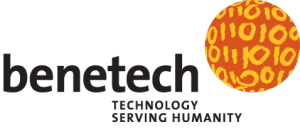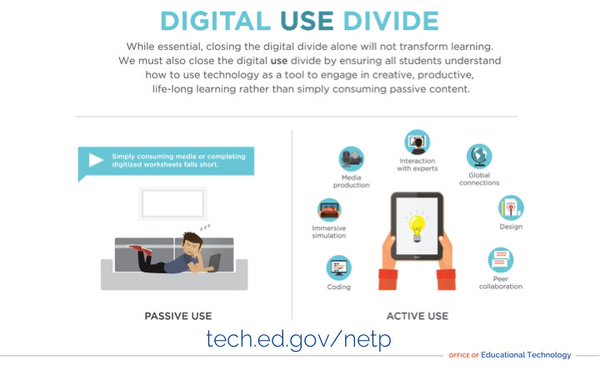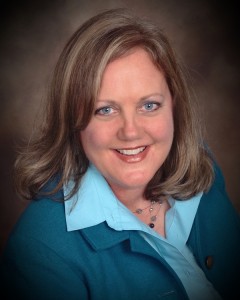 Benetech is a nonprofit company leveraging Silicon Valley technology and process to create and scale solutions for pressing social issues. Two Benetech initiatives, the DIAGRAM Center and Born Accessible, are cited in The 2016 National Education Technology Plan (NETP) released by the Office of Educational Technology of the U.S. Department of Education. The report recommends that “education stakeholders should develop a born accessible standard of learning resource design to help educators select and evaluate learning resources for accessibility and equity of learning experience.”
Benetech is a nonprofit company leveraging Silicon Valley technology and process to create and scale solutions for pressing social issues. Two Benetech initiatives, the DIAGRAM Center and Born Accessible, are cited in The 2016 National Education Technology Plan (NETP) released by the Office of Educational Technology of the U.S. Department of Education. The report recommends that “education stakeholders should develop a born accessible standard of learning resource design to help educators select and evaluate learning resources for accessibility and equity of learning experience.”
More significantly, though, all of Benetech’s work closely aligns with these two key themes of the report: equity and accessibility. The NETP “sets a national vision and plan for learning enabled by technology” and is intended to help education leaders “create a shared vision for how technology can best meet the needs of all learners and to develop a plan that translates the vision into action.”
Benetech’s work focuses on the intersection of two inequities referenced in the NETP: an accessibility divide and the Digital Use Divide. In the report, accessibility “refers to the design of apps, devices, materials, and environments that support and enable access to content and educational activities for all learners,” specifically learners with disabilities, language deficits, varied learning styles, etc. As many of us are painfully aware, most learning materials are not created with “all learners” in mind, and the result is an accessibility divide.
The Digital Use Divide refers to the manner in which technology is being applied in learning environments. According to the NETP, students who are simply reading information on devices are only passively using technology. When applied to its fullest potential, technology can engage students in active learning, as shown in the illustration below.

Benetech has been beating the accessibility drum for nearly fifteen years. It could be said that one of Benetech’s first and most popular products, Bookshare, the world’s largest online library of accessible ebooks, gives people with print disabilities the opportunity to participate even in passive learning. Benetech launched Bookshare in 2002, and today over 400,000 members can access a collection of more than 395,000 titles in ways that work for them. Many members also engage in active learning when they use one of several commercially-available reading tools that support further exploration and note taking.
Several years ago, as digital materials began to take on a more prominent role in learning environments, and given their great potential to transform passive learners into active ones, Benetech recognized the need to take its accessibility message to publishers who were creating digital content. Benetech’s drumbeat then became: if materials are “born digital,” they can be “born accessible.”
Last year alone, Benetech reached out to 70 publishers and vendors in the publishing supply chain to encourage them to adopt features and tools that would result in more accessible ebooks published in 2016. Our team offered these companies several tools to build accessibility into their products from the start. Benetech is now working closely with a number of them that have taken on this challenge. Highlights to date include:
- Benetech conducted an accessibility assessment of a top-selling EPUB 3 file for HarperCollins, which resulted in their implementing new accessibility practices.
- Pearson began to include the Poet Training Module and the Accessible Image Sample Book in their staff training programs.
- Several publishers, including O’Reilly Media and Hawkes Learning, have incorporated MathML Cloud into their workflows.
- A leading conversion vendor, Amnet, incorporated several accessibility tools into their workflow.
- John Wiley & Sons, the global publishing house that specializes in academic publishing, made the commitment to include alternative text (alt text) in nearly all of their frontlist books.
Aware of the need to create market demand for “born accessible” learning materials, Benetech launched its “Buy Accessible” initiative, which helps instructional materials purchasers identify and request ebooks that will provide an equal experience to students with print disabilities.
The focus of a separate but related Benetech initiative, 3D Printing for Education, was to identify new ways in which 3D printing technology can be used to improve learning and accessibility, particularly in STEM disciplines. 3D printed models and other tactile graphics can make complex ideas easier to comprehend — and not just for people with disabilities. One of the important outcomes of this project is the 3D Printing for Education Quick Start Guide.
Benetech will continue to beat the accessibility drum to help ensure that people with disabilities benefit equally from technology-rich, engaging learning environments. We are thrilled that the accessibility “drum circle” is widening to include many policy makers, governmental agencies (such as the Office of Educational Technology) and for-profit companies as well as nonprofits and advocacy groups. Our message to all who embrace the recommendations of the NETP? Pick up your drumstick and play along!
Christi ne K. Jones is a Senior Education Program Manager in the Global Literacy Program at Benetech and conducts outreach to professionals serving people with disabilities. She has a B.A. from the University of California at Berkeley and an MBA from the University of Phoenix.
ne K. Jones is a Senior Education Program Manager in the Global Literacy Program at Benetech and conducts outreach to professionals serving people with disabilities. She has a B.A. from the University of California at Berkeley and an MBA from the University of Phoenix.

Be First to Comment